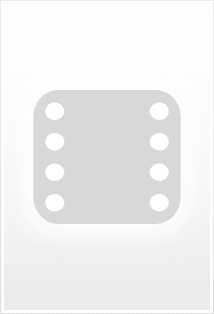Plain and simply, this is one of the best family films ever made. The fact that someone other than Disney made the film seems to have blinded some pundits (e.g., Disney scholar and film critic Leonard Maltin) to its many and varied charms. For "Chitty," in fact, originated in the book by James Bond creator Ian Fleming and, horror of horrors, was produced outside Hollywood by Albert Broccoli, the man behind the successful Bond film series. Yet, a closer look at the credits reveals the presence of the same musical composers, the much-heralded Sherman Brothers and Irwin Kostal, who could do no wrong when they wrote for Disney, but somehow left their talent behind when they signed on with Mr. Broccoli. (Note Maltin's comment in his 2007 film guide that the film's score is "forgettable.") The same apparently happened with the choreographers Dee Dee Wood and Marc Breaux, who are universally acclaimed for their work on "Mary Poppins," but ignored, at least by Maltin, for the snappy and often elaborate routines in "Chitty." In fact, the songs, background music and dances here are as good or better than anything in Disney and often actually advance the plot, rather than grinding it to a halt in the more customary way. A case in point is Caractacus' "Old Bamboo" song and dance routine, which provides not only an instantly memorable tune (and dance), but also the financial means to save Chitty from the scrap heap. The cast itself is nothing short of superb, with American comic actor Dick Van Dyke wisely eschewing any attempt at an English accent, something many of us wish he had done a few years earlier in "Poppins." (In a 1998 appearance on the Rosie O'Donnell show, the self-effacing Mr. Van Dyke acknowledged his limitation in the area of English accents.) The actors playing the children are a genuine delight, charming and sincere without being cloying, while the supporting cast is filled with more marvelous British character actors than one can count, not the least of them being Lionel Jeffries (actually six months younger than Van Dyke, whose father he was playing) and comedy legend Benny Hill in a rare straight role. And if that's not enough, there's always the scene in which Goldfinger himself (German actor Gert Frobe) sings and dances! Then there is the simply stunning cinematography by Christopher Challis, the marvelous costumes by Joan Bridge and Elizabeth Haffenden, and the fantastic production design by Oscar-winning designer Ken Adam, whose high ceilings and sloping walls are instantly identifiable from such classics as "Goldfinger" and "Dr. Strangelove." And unlike "Poppins," which is inexplicably praised for its obvious studio recreations of London streets, this film actually goes on location--and then some, showcasing truly magnificent settings in southern England, France and Germany (including the fabulous, fairy-tale Neuschwanstein Castle). Maltin and others have complained about the film's special effects, calling them "the shoddiest ever." What they are talking about is the blue screen traveling matte shots in which the magical car was optically placed in front of separately-shot film of a sky background. And I agree that several of these shots are "obvious" to film students who know how they are achieved. But, again, look at what is overlooked. The car itself, which undergoes several conversions for air and sea travel, is an amazing mechanical special effect designed and built by John Stears. Stears, of course, won an Oscar for the SFX on "Thunderball" and would go on to win another for a little film called "Star Wars." But never mind, what could he know about special effects? Oh, did I mention that the screenplay was co-written by Roal Dahl, someone who just might have known a thing or two about children's stories. But enough. This film is truly scrumptious from the first frame to the last, a timeless delight for anyone but Hollywood film critics.
